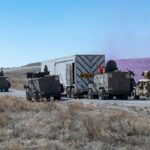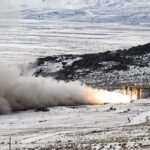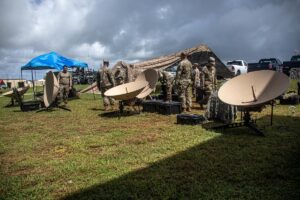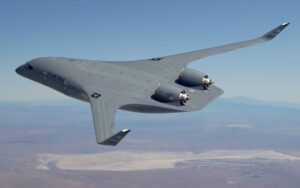
The Senate wants the U.S. Air Force to consider simultaneous construction of silos for the Northrop Grumman [NOC] LGM-35A Sentinel for the three missile wings–the 90th at F.E. Warren AFB, Wyo.; the 91st at Minot AFB, N.D., and the 341st at Malmstrom AFB, Mont., according to the Senate’s fiscal 2026 military construction, veterans affairs, and related agencies appropriations bill.
On Wednesday, the Senate passed a motion to proceed on consideration of the bill on a vote of 90 to 8.
The Senate Appropriations Committee “believes that the Nunn- McCurdy review of the Sentinel program presents an opportunity to identify cost-saving measures and explore options to accelerate deployment of the new missile,” according to the report on the bill. “As part of that effort, the committee recognizes the potential benefits of a revised schedule that allows for concurrent construction of Sentinel launch facilities across the three missile bases and supports further evaluation of that approach. Therefore, the committee directs the secretary of
the Air Force to submit a report to the committees on appropriations of both houses of Congress within 180 days of enactment of this act that includes (1) the updated schedule for construction of
all Sentinel launch facilities, (2) a comparison between the current schedule and the schedule in place prior to the Nunn-McCurdy review that illustrates the extent to which concurrent construction may occur across the three missile bases, and (3) a year-by-year estimate of the construction budget required to execute the concurrent schedule.”
The Air Force is restructuring the program after a critical Nunn-McCurdy breach announced by the service in January last year, and that restructuring/new integrated schedule is to happen by next summer.
A decade ago up until the Nunn-McCurdy breach, Pentagon leaders thought that they could re-use the old Minuteman III silos–and their steel and concrete–to build the then called Ground Based Strategic Deterrent more quickly and cheaply. Yet, the Sentinel is significantly larger than Minuteman III.
Last month, Air Force Gen. Thomas Bussiere, the head of Air Force Global Strike Command, said that he had approved Sentinel silo plans for two of the three missile wings (Defense Daily, June 7).
On Wednesday, Sen. John Hoeven (R-N.D.), a member of the Senate Appropriations Committee’s defense and military construction panels, said that concurrent Sentinel silo construction at the three missile wings would be important to reduce program costs.
“You’re talking relatively rural areas, and if you go in and flood the zone and try to do one [wing] all at once you’re going to drive up the costs, you’re not going to be able to get the services, you don’t have the housing, you don’t have the emergency response,” he said in an interview off the Senate floor. “The way you get your costs down and keep it [Sentinel] on schedule is you work across the three [missile wings].”
During Northrop Grumman’s earnings call on Tuesday, Robert Stallard of Connecticut’s Vertical Research Partners, LLC, asked Northrop Grumman CEO Kathy Warden whether an acceleration of the Sentinel missile would be apart from silo construction, given the change in plans for the silos.
“It is not,” she said. “The way we look at it is all three segments [missile, command and control, and launch] of the program need to move forward, and that’s what is most exciting about what happened in the second quarter. We actually made progress such that the work was turned back on for the launch facilities or as you referenced them, the silos themselves. And so we are back into designing those and really nailing down with the Air Force, the appropriate requirements that will lead us to be able to move faster and potentially reduce costs on the program from the baseline that emerged coming out of the Nunn-McCurdy.”
“So that is the work that we’re doing right now to bring that leg of the program in alignment with the others,” Warden said. “While we have continued to make good progress on the missile and the support and sustaining equipment, we are focused now on bringing the command and launch to that same level of maturity and design.”














